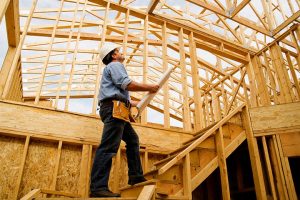 Home prices in the United States rose slightly less than analysts had originally estimated in the month of March. This is according to new data from the Standard & Poors CoreLogic Case-Shiller US National Home Price Index. Still, analysts say, the gains were enough for the market to reach an 33-month high, with prices climbing at their strongest rate in roughly three years.
Home prices in the United States rose slightly less than analysts had originally estimated in the month of March. This is according to new data from the Standard & Poors CoreLogic Case-Shiller US National Home Price Index. Still, analysts say, the gains were enough for the market to reach an 33-month high, with prices climbing at their strongest rate in roughly three years.
More specifically, this 20-city home price index—which the agency released Tuesday—increased nearly 6 percent over the course of the past 12 months (ending in March). Home values are increasing, then, at more than double the pace of average hourly earnings, which is great for sellers, but making it increasingly more difficult for buyers to find a house they can afford.
According to S&P Dow Jones Indices managing director and chairman of the index committee, David Blitzer, “Over the last year, analysts suggested that one factor pushing prices higher was the unusually low inventory of homes for sale. People are staying in their homes longer rather than selling and trading up.”
Actually, home prices hit a new high in September, but the growth rate has simply extended beyond that. Among the 20 cities surveyed in the Case-Shiller survey, Seattle, Portland, and Dallas have all reported their highest year-over-year gains ever—with Seattle leading the charge at a whopping 12.3 percent gain. In fact, the smallest YOY gain was in New York, at a paltry 4.1 percent. Minneapolis saw the biggest month-over-month rise, at 1.3 percent; home prices fell in Tampa and Cleveland compared to the month before.
Instead, Blitzer resigns, “People are staying in their homes longer rather than selling and trading up,” David Blitzer, managing director and chairman of the index committee at S&P Dow Jones Indices, said in a statement. “If mortgage rates, currently near 4%, rise further, this could deter more people from selling and keep pressure on inventories and prices.”
Indeed, he advises: “While prices cannot rise indefinitely, there is no way to tell when rising prices and mortgage rates will force a slowdown in housing.”
